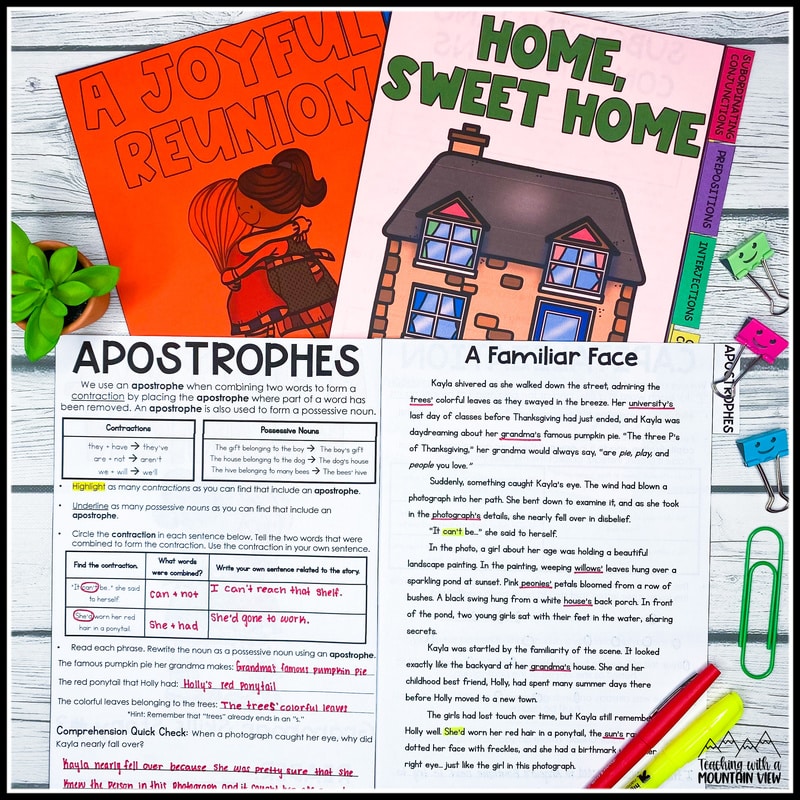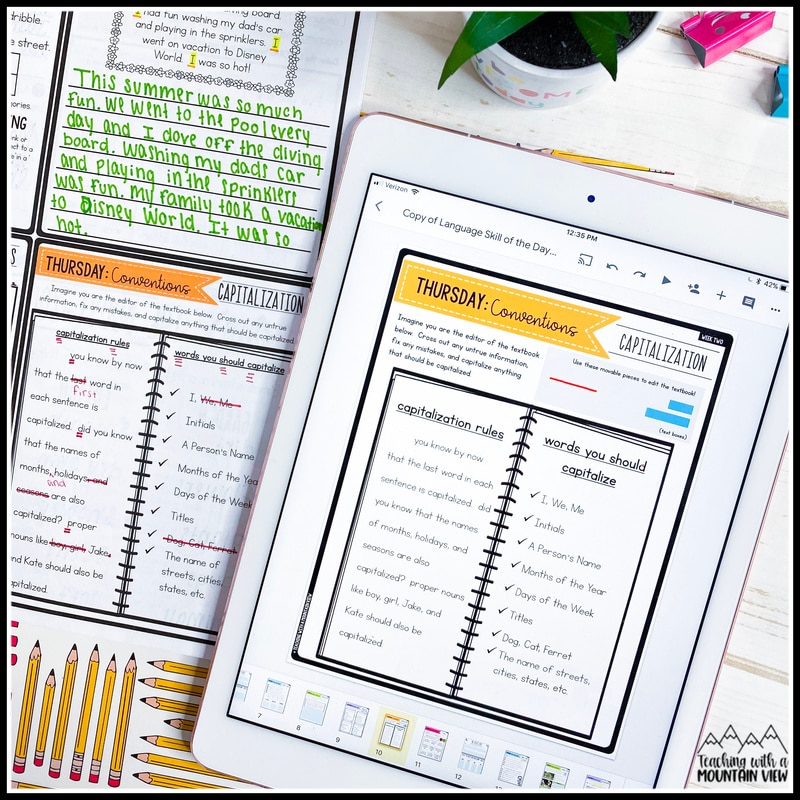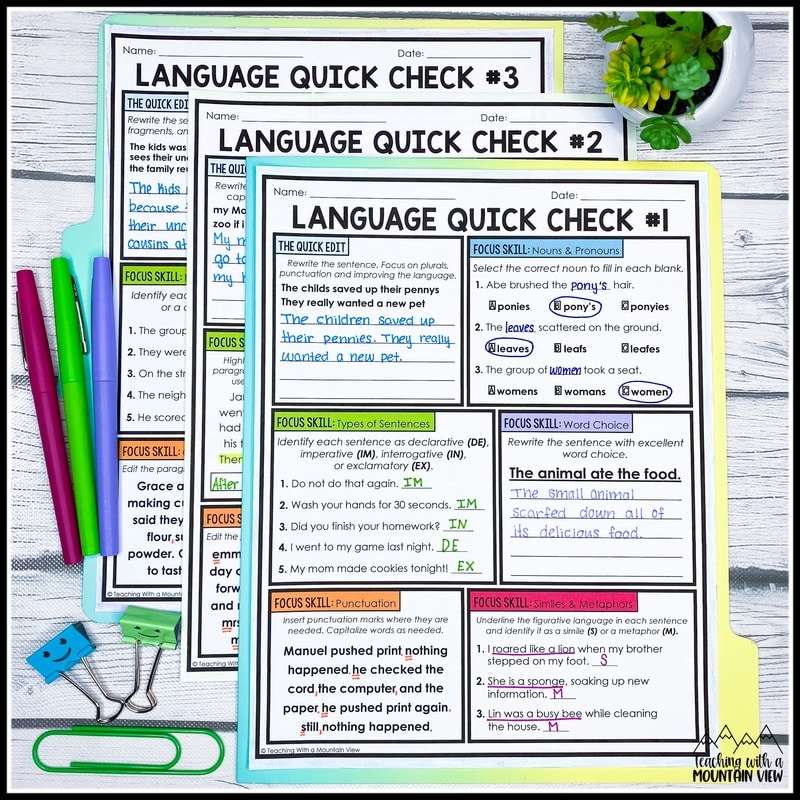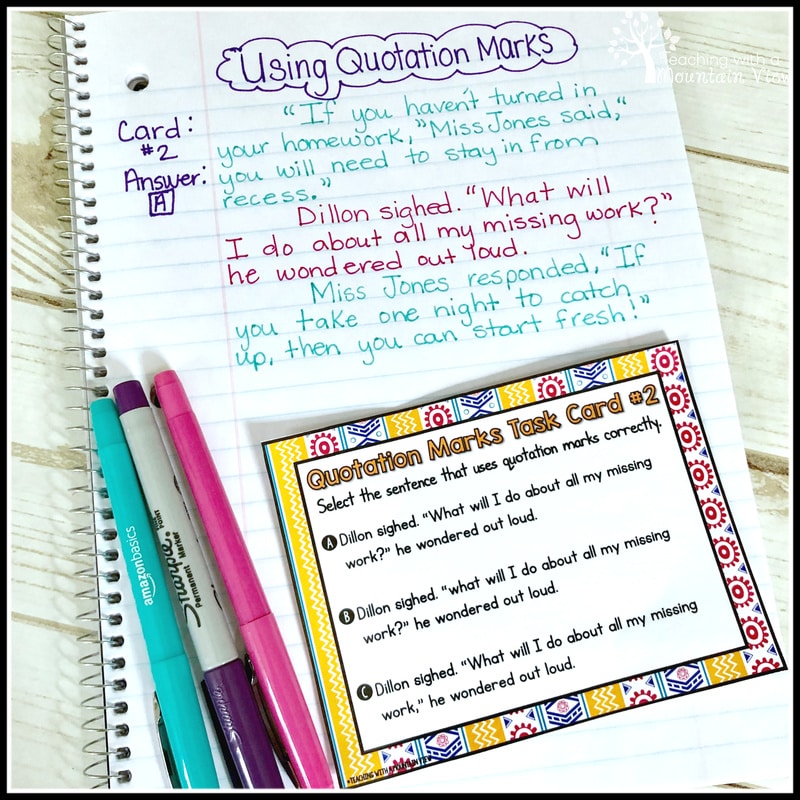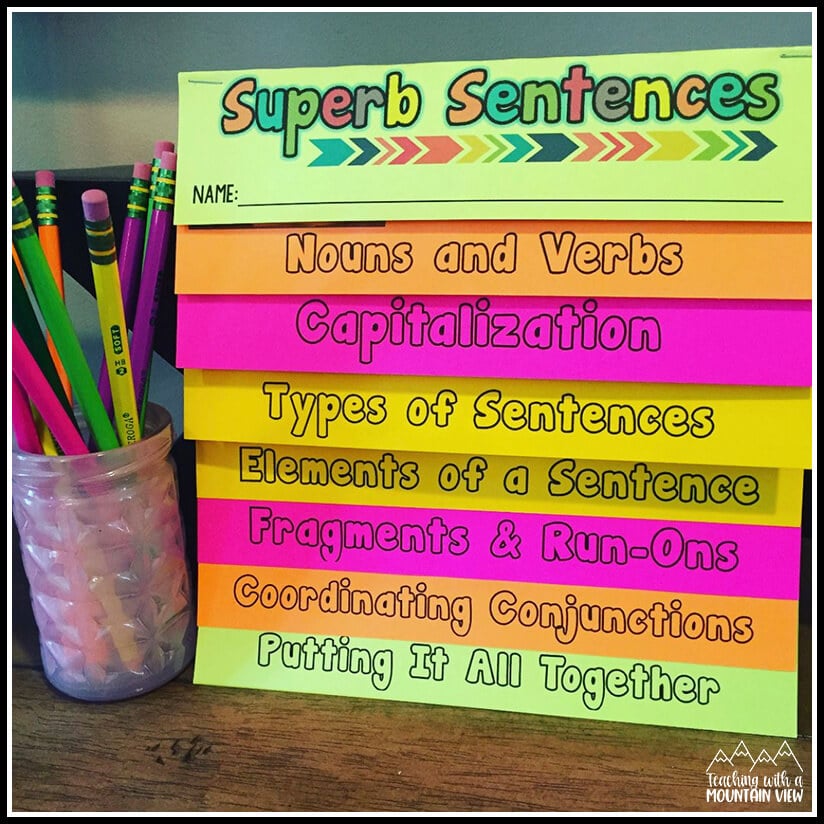Activities for Teaching Punctuation: Quotation Marks, Dialogue, and Apostrophes
By Mary Montero
Share This Post:
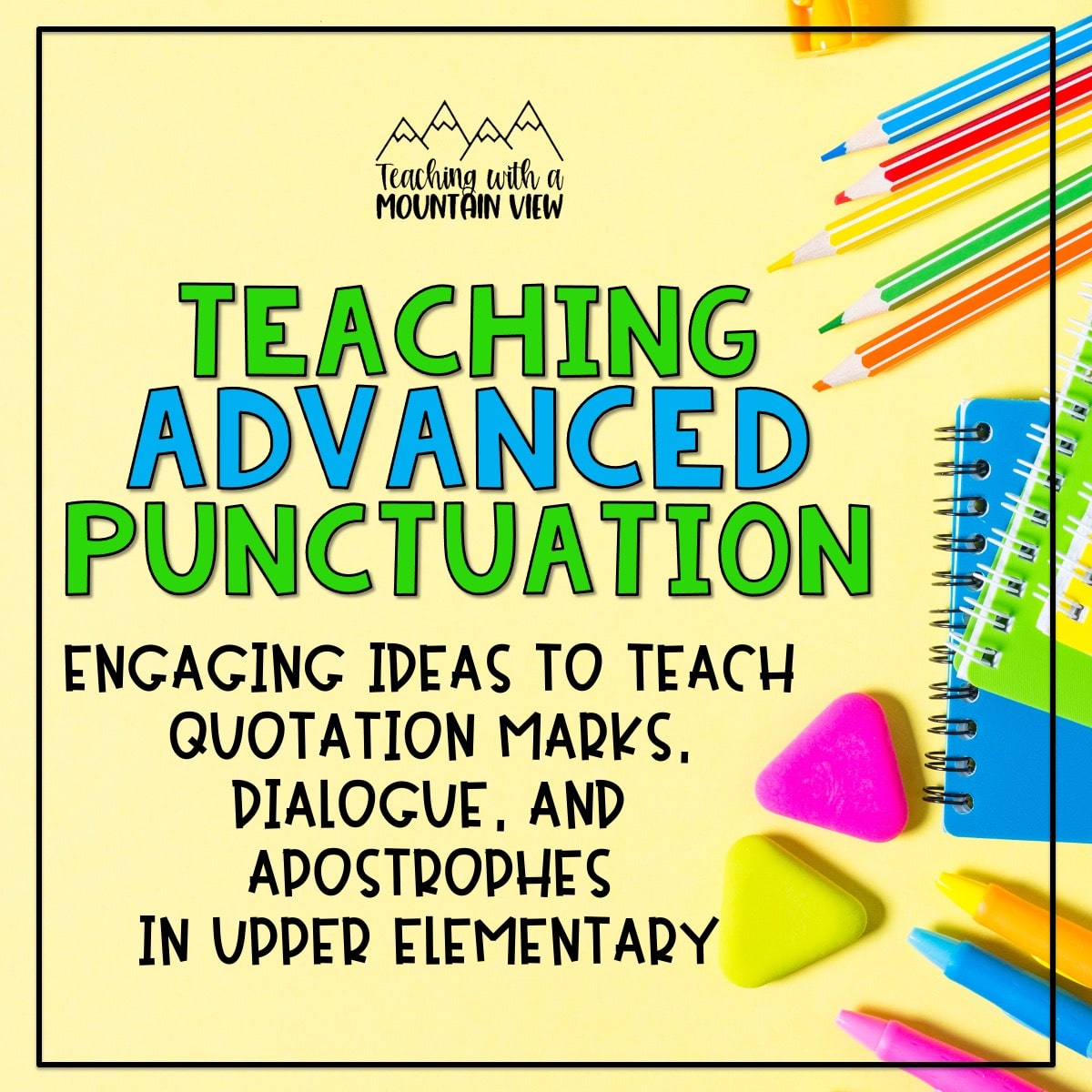
Students who don’t use punctuation often miss the point. Get it?? That’s a lame joke, but it speaks to our upper elementary students’ larger struggle with using quotation marks and apostrophes.
By the time students enter upper elementary, they have heard a lot about end punctuation and commas. Quotation marks and apostrophes are new, though, and these challenge them to think about their sentence structures in new ways. Here are my best tips for teaching punctuation in upper elementary.
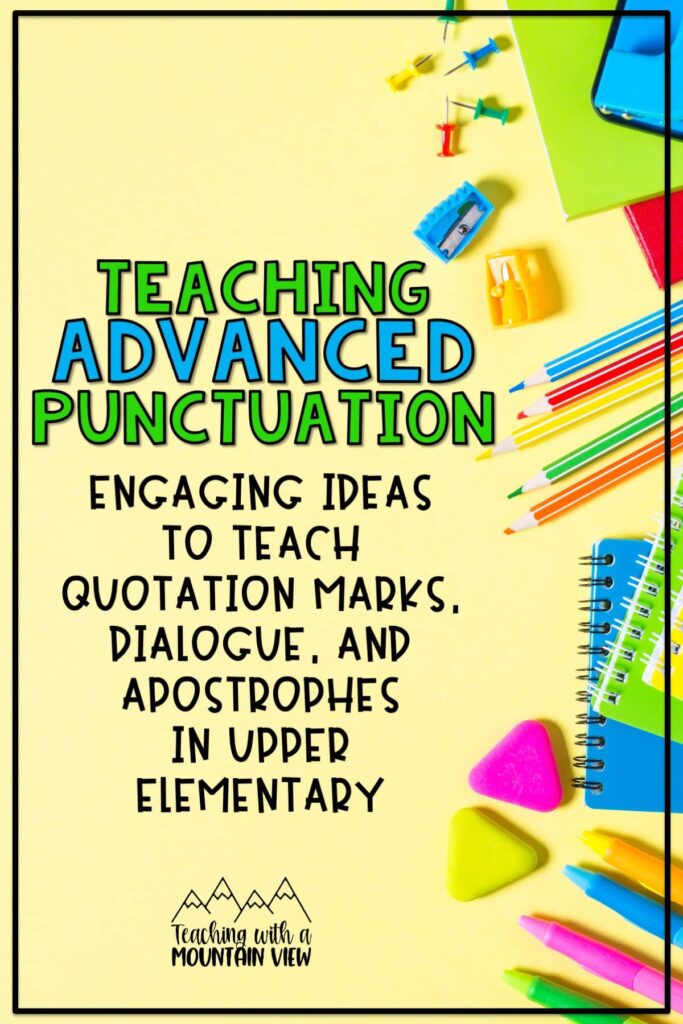
Teaching Punctuation: Anchor Charts
The great news about these pieces of punctuation is that they aren’t too challenging to explain, but their multiple rules can be hard for students to remember. Quotation marks and dialogue go hand in hand, but I don’t try to fit allllll the information into just one lesson.
To introduce your students to more advanced punctuation, I recommend starting with a mini-lesson and anchor chart. As you create the anchor chart for the classroom, have students copy it in their writing notebooks. Here are some ideas for creating these anchor charts.
Dialogue Anchor Chart: On the dialogue anchor chart, you want to show students how to properly punctuate dialogue. Give students a description and example for each type on your anchor chart, and ask have them to create their own unique sentences on their anchor charts.
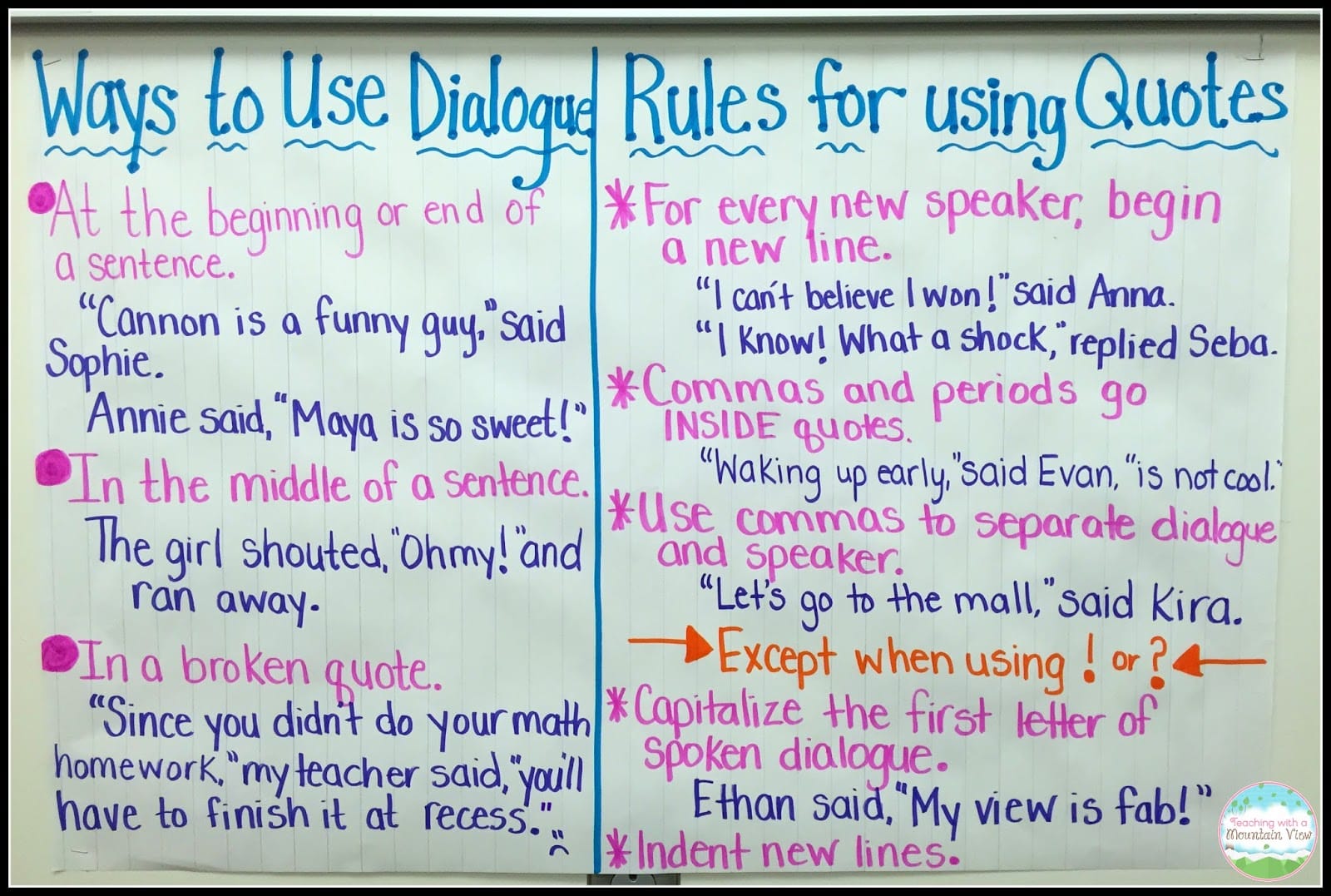
Quotation Marks Anchor Chart: Make sure your students know what quotation marks look like. On the anchor chart, write when quotation marks are used (to show that someone is talking). Have students look through a book or short story and find quotation marks. Write down several example sentences from the text, and underline the parts that show the characters speaking.
For example: “I love my dog so much,” said Sally.
Apostrophes Anchor Chart: Give students the two rules for apostrophes: contractions and possessives (this can be broken down, so you aren’t teaching both on the same day). For contractions, have students write a contraction on a sticky note and place it on the anchor chart. For possessives, give students an example of using an apostrophe with both a singular and plural noun.
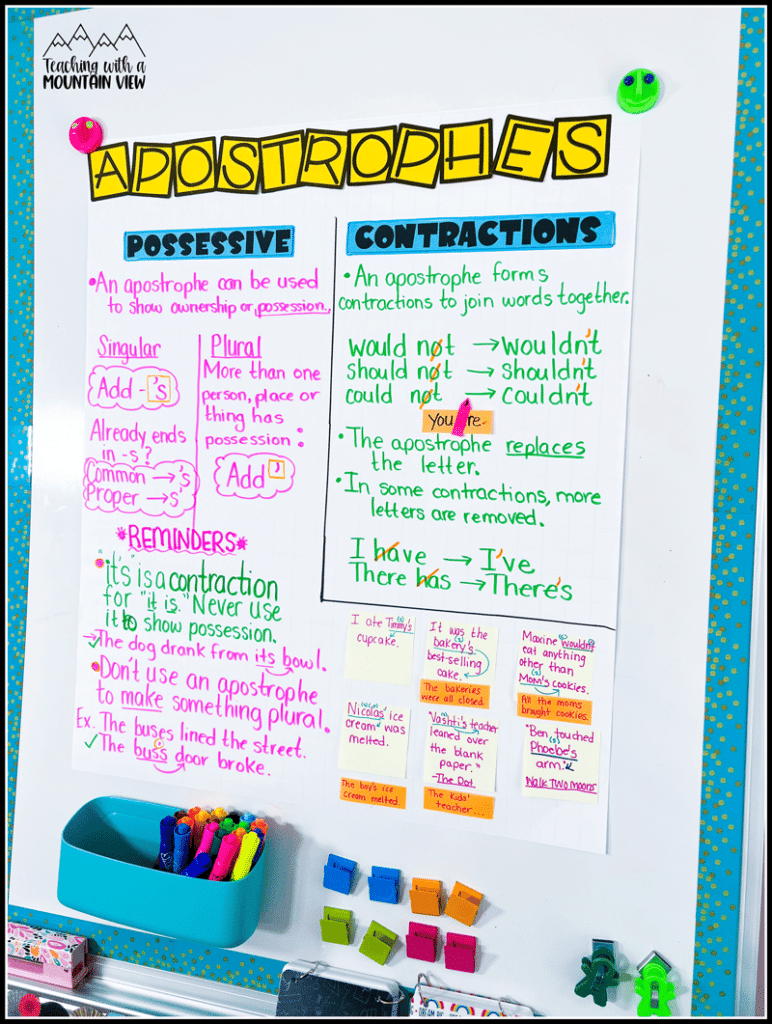
After completing your anchor chart with students, they will have a reference guide for the rules that apply to each piece of punctuation. Don’t forget to hang your anchor chart in the classroom so that your students can easily refer to it as they are working in class.
Teaching Punctuation: Guided Grammar Practice
Now it’s time for some guided practice. Modeling these punctuation skills with students is a great way to solidify the rules and help correct any confusion over this new punctuation. You can do this through whole-class practice or small groups. Here are two ways we practice our grammar skills together.
I use Grammar Skills Review Flipbooks to review key skills throughout the year. I find that students easily forget these skills without consistent practice, and the engaging flipbook format is always a hit!
Another resource that makes spiral review simple is Language Skill of the Day. We use our language journal for warm-ups or during morning time to keep grammar skills fresh all year long. Add weekly language skill quick checks for easy assessments too!
Now you can try one free week of Language Skill of the Day for FREE!
Practice Activities for Quotation Marks and Dialogue
Dialogue Topple Blocks: Who doesn’t love playing games? When students pull a topple block, the whole group must answer a dialogue question that correlates to the color of the block. For example, students might be asked to select the correct sentence, underline dialogue, or move the dialogue tag in a sentence.
Sentence Noodles: This dialogue and quotation mark activity is always a hit with my students. Write several sentences on sentence strips that include dialogue, but don’t add the punctuation. Then, have students place punctuation in the sentences using macaroni noodles!
Write a Conversation: This is a simple activity, but it’s great practice! Have students write a short dialogue between characters, using their knowledge of quotation marks and dialogue. You can have them choose their own topic to write about or give them a prompt to use.
Task Cards: This quotation marks task card set has students select the sentence that correctly uses quotation marks. You can create a more challenging experience by asking students to describe why the answer choice is correct or to edit one of the wrong answers.
Practice Activities for Apostrophes
Contraction Book Search: Provide a pile of picture books or chapter books, and have students search in the book for contractions. As they find contractions, they should write them down and identify the two words that compose the contractions.
Guess the Object: This is a fun whole-class game that you can use to practice possessive apostrophes. Have students place their heads down on their desks. Then, grab an object from a student’s desk (for example, a pencil bag or water bottle). Have students lift up their heads and write down on a white board to whom they think the item belongs (for example: Sophia’s pencil bag or Jeremy’s sweater).
Activities to Bring it All Together
Now that you practiced these skills in isolation, it’s time to bring all of this new knowledge together.
Emoji Mania: I love to incorporate my emoji magnets in the classroom. For this activity, students will select 5-8 magnets and create a conversation where they would add the emoji at the end. For an added challenge, have students include at least one contraction or possessive noun in their sentences.
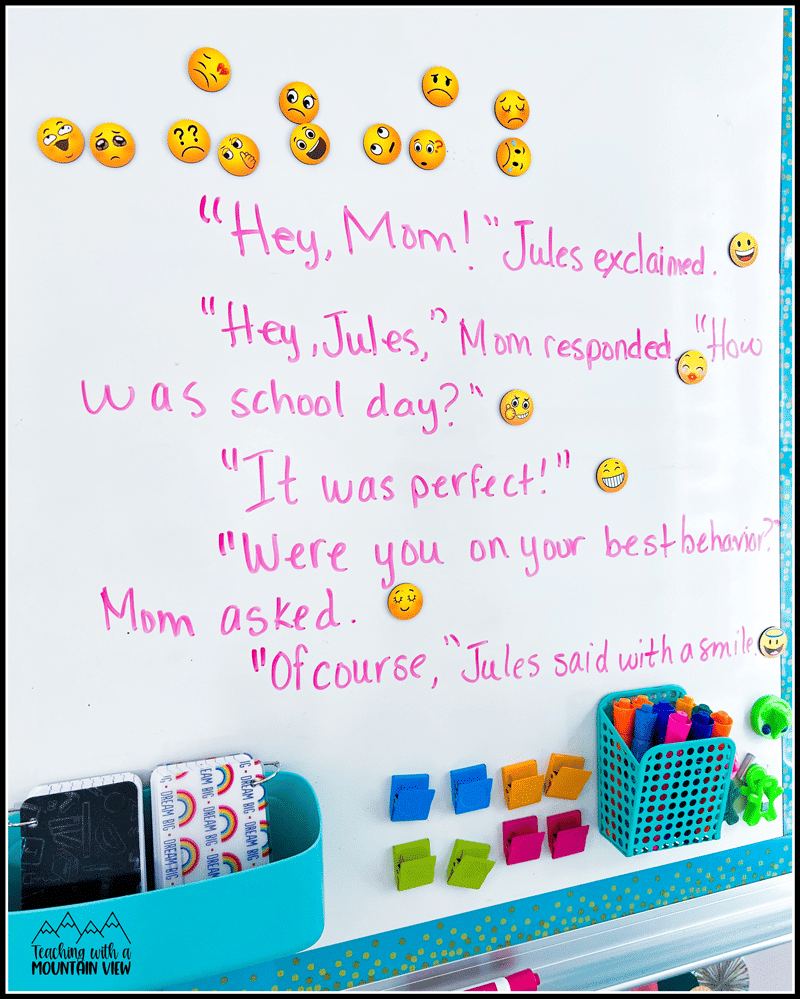
Writing Super Sentences:– Now that students know some additional punctuation rules, they can create amazing sentences. This Super Sentence Flipbook activity challenges my students to combine all of their knowledge together. It is definitely a challenge, but they are always proud of what they are capable of doing! You can read this blog post about how I use the Super Sentence Flipbook in my classroom to see it in action.
I hope you found several new grammar activities for teaching punctuation to use in your classroom right away! The more you can incorporate advanced punctuation practice, the more you will find your students writing complex sentences. It also helps with reading comprehension, too! Visit these posts for more upper elementary grammar help!
Mary Montero
I’m so glad you are here. I’m a current gifted and talented teacher in a small town in Colorado, and I’ve been in education since 2009. My passion (other than my family and cookies) is for making teachers’ lives easier and classrooms more engaging.







